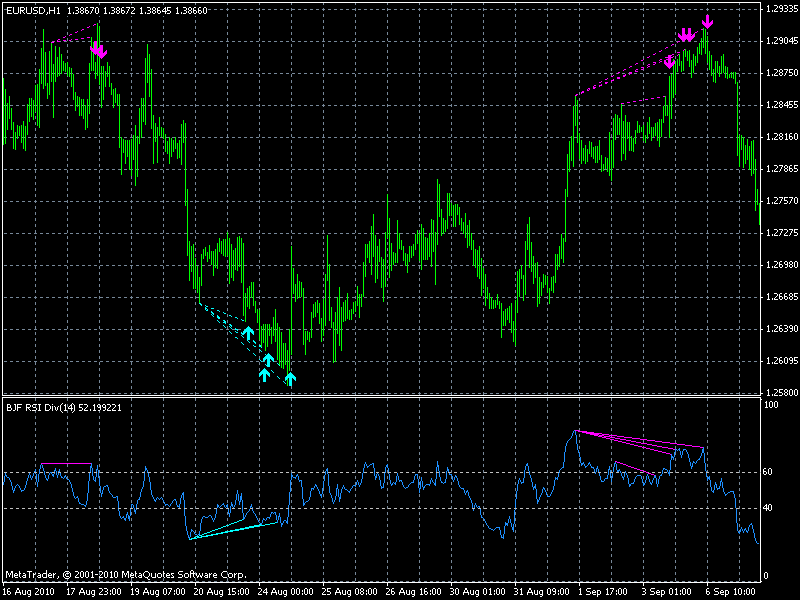Introduction
Welcome to the world of technical analysis, where indicators like the RSI (Relative Strength Index) divergence play a crucial role in helping traders make informed decisions. In this comprehensive guide, we will delve into the intricacies of RSI divergence and equip you with the knowledge to leverage this powerful tool for profitable forex trading.
RSI is a momentum indicator that measures the strength of a price change by comparing the magnitude of positive and negative price changes over a specific period. This comparison results in an oscillator that fluctuates between 0 and 100, indicating overbought or oversold conditions. RSI divergence occurs when the RSI indicator creates a different pattern from the price action itself, signaling a potential reversal in the market’s direction.

Image: www.forexfactory.com
Understanding RSI Divergence
RSI divergence can be either bullish or bearish, depending on the type of pattern formed.
Bullish Divergence
In a bullish divergence, the price makes a lower low but the RSI makes a higher low. This indicates that the selling pressure is decreasing even as the price falls, suggesting that a reversal may be imminent.
Bearish Divergence
Conversely, in a bearish divergence, the price makes a higher high but the RSI makes a lower high. This suggests that the buying pressure is weakening even as the price rises, hinting at a potential downward reversal.

Image: ylugudivalul.web.fc2.com
Identifying RSI Divergence
Spotting RSI divergence is not always straightforward. Here are some key steps:
- Plot the RSI indicator on your trading chart.
- Identify market peaks and troughs by studying the price action.
- Compare the price peaks and troughs to the corresponding RSI levels.
- Look for discrepancies between the two patterns, indicating potential divergence.
Using RSI Divergence for Trading
RSI divergence can be a valuable tool for timing entry and exit points in a trade.
Trading with Bullish Divergence
When a bullish divergence is identified, it signals a potential buying opportunity. Enter a long position after the RSI creates a higher low and the price action confirms the bullish momentum.
“`
Exit Strategy: Sell when the RSI makes a lower high or the price action signals a reversal.
“`
Trading with Bearish Divergence
Spotting a bearish divergence presents a potential shorting opportunity. Enter a short position after the RSI makes a lower high and the price action confirms the bearish trend.
“`
Exit Strategy: Cover your short position when the RSI makes a higher low or the price action suggests a change in trend.
“`
Additional Considerations
While RSI divergence is a powerful indicator, it should not be used in isolation. Combine it with other technical analysis tools, such as candle patterns, moving averages, or support and resistance levels, for a more comprehensive market assessment.
<p><strong>Timeframe:</strong> RSI divergence can be applied to any timeframe, but the most common and reliable results are typically found on higher timeframes (e.g., 4-hour, daily, or weekly charts).</p>Rsi Divergence Indicator Forex Factory
Conclusion
Mastering RSI divergence empowers you with a valuable tool for identifying potential trading opportunities in the forex market. By understanding how to identify and interpret these divergences, you can increase your accuracy and profitability. Remember to always combine RSI divergence with other technical analysis techniques for a holistic approach to market analysis. We encourage you to explore additional resources, practice on demo accounts, and refine your trading strategies to harness the full potential of RSI divergence in your forex trading endeavors.






